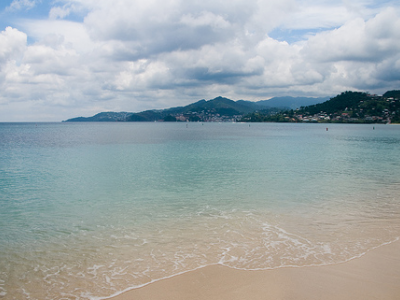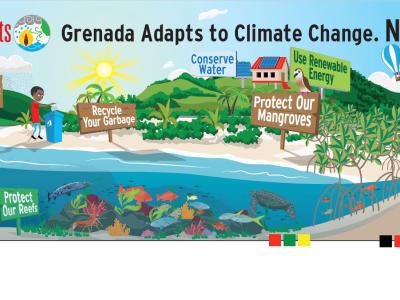The state of Grenada consists of the islands of Grenada, Carriacou and Petit Martinique. Grenada is characterized by a humid tropical climate, with relatively constant temperatures throughout the year averaging 26 degrees centigrade. The mean maximum temperature is 31.4 degrees centigrade while the mean minimum is 24.0 degrees centigrade.The country’s 345 square kilometer land base is characterized by mountainous terrain and is ringed by coral reefs. Approximately 104,000 people live in Grenada (Charles, 2000; USDS, 2010). Grenada’s climate is primarily humid and tropical, with the country experiencing a dry season from January to May and a rainy season from June to December. Extreme drought conditions can be experienced during some dry seasons (Charles, 2000).
Grenada has a high rate of unemployment, at nearly 25 per cent. Economic activity in the country is dominated primarily by services (tourism and education) and agricultural production (nutmeg and cocoa) (USDS, 2010). Grenada has been adversely affected by extreme weather events over the past several decades; two hurricanes in 2004 caused damage totaling approximately 2.5 times the country’s annual Gross Domestic Product, and damaged or destroyed 90 per cent of the island’s buildings (USDS, 2010).
Over the last decade the annual rainfall ranged from 750 to 1400 mm. Two distinct rainfall patterns are evidenced. The dry season typically runs from January to May and the rainy season from June to December. Carriacou and Petit Martinique generally receive lower levels of rainfall and during the dry season can experience severe drought conditions.
There are a variety of coastal and marine resources in Grenada - coral reefs, sea grass beds and mangrove swamps, which have proven to be of crucial importance in the formation and sustenance of other resources as well as near-shore fisheries. The sea grass beds and mangrove wetlands are highly dependent on the presence of coral reefs (hydrodynamic barriers that dissipate wave energy) as it enhances the structure of the sea grass and mangrove communities.On the islands of Grenada and Carriacou, approximately 77% and over 54% respectively of the land area has slopes exceeding 20°. Approximately 3% of the land area is at sea level and these include the main towns and many of the key socio-economic facilities.
Projects Under Implementation
Projects Completed
Latest Publications
See allThe Climate Kids Adventures Book Series Project aims to engage young children in climate change awareness by communicating in a fun and…





